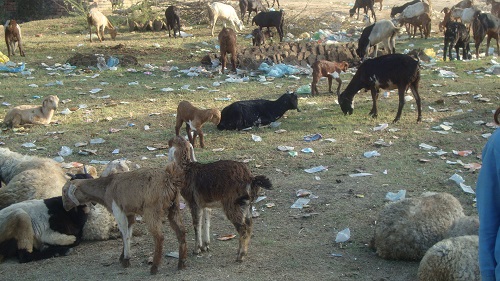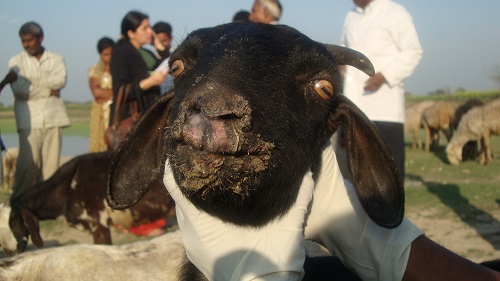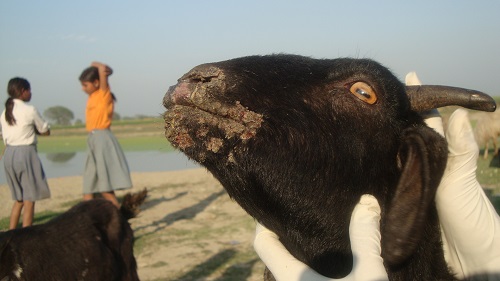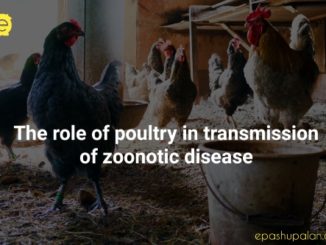Goats dominate as the major livestock in the poorest parts of the world. Goats are a source for meat, milk and fibre. Their ability to survive under harsh conditions makes them a very valuable asset for subsistence farmers. Goats have a significant contribution in rural economy of India. Morbidity and mortality are the two important factors resulting in heavy losses in goat production and improvement programmes. Diseases in goats result in mortality. In addition, losses due to morbidity result in low productivity. This has special significance with viral diseases of goats as they seem to respond less to treatment. Viral diseases cause heavy mortality and morbidity resulting in significant economic losses which adversely affects the goat industry. Goat Plague: Peste des petits ruminants is the most important viral disease of goats prevalent in India that has the greatest capacity of creating economic havoc.

Peste des petits ruminants (PPR) is an acute, contagious and frequently a deadly disease of goats. Outbreaks of Peste des petits ruminants have been reported in various parts of India and the disease is considered to be endemic throughout India. Due to the endemic status of PPR in India, PPR is considered to be one of the main limitations to production in the small ruminant industry. Economic losses due to PPR have been estimated to be approximately 1,800 million Indian Rupees annually.
Etiology and epidemiology of PPR
- It is caused by a Paramyxo virus of morbilli genus and is closely related to the rinderpest virus.
- Animals are infected by contact with a clinically ill animal, as the virus is shed in secretions – oral, nasal, lachrymal and faecal.
- The virus has poor survivability in the environment, so fomite transmission is not of great significance.
- The disease is considered to be a major constraint in the development of small ruminant productivity by causing high mortality in young animals.
- Goats and sheep that recover from infection do not shed the virus.
- For PPR no carrier state has been identified.
Incubation period of PPR: About 5–7 days after being infected, the goat will begin to show the signs of illness.
Clinical signs of PPR:
- Fever
- Ocular and nasal discharge
- Stomatitis
- Diarrhoea: younger animals are more likely to die during this period.
- Difficulty in respiration
- Pneumonia
- Depression
- Erosions in the oral cavity and at the external nares and conjunctiva which can progress to extensive ulcerations and abundant crusting
- High morbidity is high, usually on the order of 70–80%.
- High mortality, about 50–60% of infected animals will go on to die.




Diagnosis: Diagnosis is based on clinical signs and isolation of virus.
Differential Diagnosis: The disease must be differentiated from Rinderpest, Blue tongue, goat pox etc.
Treatment
- There is no specific treatment for PPR.
- Affected animals should be placed on parenteral broad-spectrum antibiotics early in the disease to reduce the risk of likely secondary bacterial infections.
- Long-acting oxytetracycline, requiring an injection only every third day, is useful when repeated daily injections are impractical. The dose is 20 mg/kg given intramuscularly.
- Oral or parenteral fluid and electrolyte therapy may reduce mortality associated with diarrhoea and dehydration.
Control and prevention of PPR
- The main thrust of PPR control in endemic regions currently is vaccination using homologous tissue culture vaccines.
- In India, available live attenuated vaccine (like Raksha-PPR) 1ml subcutaneously at the age of 3-4 months with revaccination at every 3 years protects goats against PPR.
- Vaccination efficiency can be increased by targeting young animals in the first year of life after the loss of colostral immunity at 3-4 months of age.
- In case of outbreaks, the spread of PPR is limited by ring vaccination of herds surrounding the infected herd.
- In non-endemic areas, total eradication is advised by slaughter and proper disposal of all sick and exposed sheep and goats.
- Control of livestock movement can limit the spread of disease.
Conclusion
Goat husbandry has enormous potential to grow and expand. The constraints arising due to health problems in goat farming can be handled by creating awareness among goat farmers, commercial goat keepers and entrepreneurs regarding important diseases of economic significance like PPR. Effective preventive and control measures like vaccines are available; however, implementation of vaccination programmes by the government agencies and livestock owners is the need of the hour.
|
The content of the articles are accurate and true to the best of the author’s knowledge. It is not meant to substitute for diagnosis, prognosis, treatment, prescription, or formal and individualized advice from a veterinary medical professional. Animals exhibiting signs and symptoms of distress should be seen by a veterinarian immediately. |








very nice presentation & useful for field condition